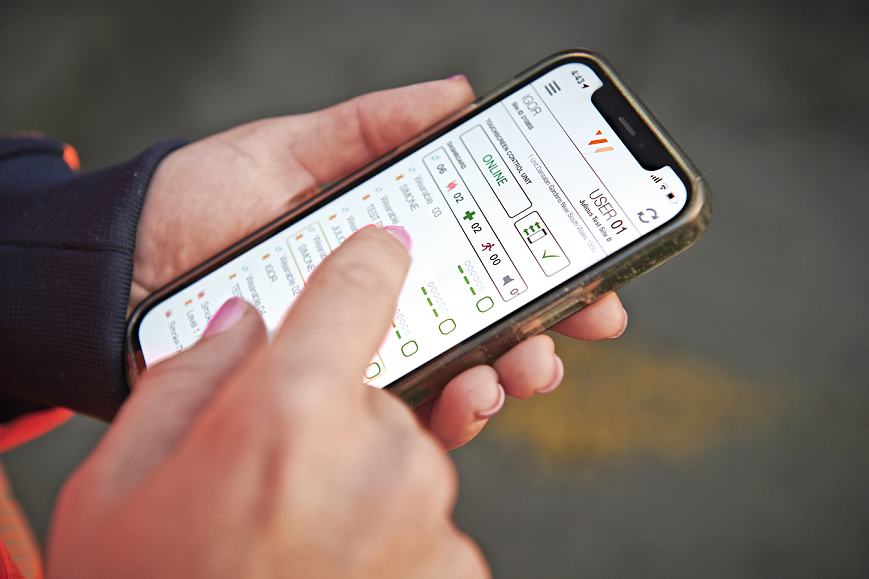During an emergency, people often experience panic. It's a natural response to a sudden and potentially life-threatening situation, and it can manifest differently in individuals. The perceived threat to personal safety activates the body's "fight or flight" response, releasing stress hormones like adrenaline, which can intensify emotions and physical reactions. Cognitive overload can make it difficult to process information, make rational decisions, or think clearly. Workers who are unprepared for emergencies or who have not received proper training on how to respond may feel helpless and overwhelmed. In many emergencies, time is of the essence, and individuals may feel pressured to make quick decisions. This time pressure can amplify stress and panic.
Panic can cause workers to forget where muster points are, what to do in an evacuation or medical emergency, and who to check in with. In this instance the ability to locate a worker (or workers) is critical for management when the business is experiencing an emergency event.
In today's rapidly changing world, the need to ensure the safety and well-being of employees during emergencies cannot be overstated. Whether it's a natural disaster, a workplace accident, or a security threat, knowing the whereabouts of your workforce is essential for an effective response.
Vanguard Wireless's smartphone app enables workers to set up Location Services. This enables management to identify a worker's location during an emergency by using their phone's GPS. If the work site has set up a geofence (a virtual border that uses GPS coordinates), Vanguard Wireless users can identify if that worker is within the geofence. But GPS does have its limitations and relies heavily on a strong signal from the worker's phone.
Another way Vanguard Wireless' customers can identify worker location is by the name of the device. If a nurse call alarm or evacuation alarm is pressed, the location of that device (level 7, Sth stairwell) is shared via the control panel and smartphone app. Emergency response personnel know where the location of the emergency is and can clear the area of any workers if the area needs to be evacuated.
Worker wearables from Vanguard Wireless also share the worker's location when the personal duress/SOS button is pressed. This is determined by the worker's closest mobile phone (GPS) or the closest device to receive the SOS signal. In this instance it's a matter of emergency response personnel attending the location of the event to determine next steps.
The Importance of Locating Workers During Emergencies
Timely Response: Knowing the exact location of employees enables organisations to respond quickly to emergencies. This can mean the difference between life and death in situations where every second counts such as nurse call alerts, personal alerts, injuries, evacuation emergencies, or - in the case of construction - the 'big four'.
Accountability: Being able to account for all employees ensures that no one is left behind or unattended during an evacuation. It also helps emergency responders focus their efforts where they are needed most.
Resource Allocation: Accurate location data helps organisations allocate resources efficiently. This includes dispatching first responders, medical assistance, and logistical support to the right areas. Precious time can be wasted if these teams don't know where to go, particularly if other workers are panicking and emergency event communication is not working.
Methods for Locating Workers
There are several methods and technologies can be employed to locate workers during emergencies:
GPS and Mobile Apps: Many organisations use GPS-enabled mobile apps to track the real-time location of employees. These apps can be integrated into employee smartphones, providing precise location data.
RFID and NFC: Radio-frequency identification (RFID) and near-field communication (NFC) technology can be used to track employees' movements within a facility. These systems are often used in large warehouses or manufacturing plants.
Beacon Technology: Beacon technology uses Bluetooth signals to locate employees within specific areas. It's especially useful in indoor environments or large office complexes.
Emergency Alert Systems: Emergency alert systems - such as Vanguard Wireless' - can be integrated with various communication platforms to send location-based alerts to employees during crises.
Geofencing: Geofencing allows organisations to define virtual boundaries on a map. When employees enter or exit these boundaries, their locations can be tracked and monitored. This can also be useful for patients and residents in the aged care or assisted living homes, where wandering off beyond a centre's boundaries can cause a number of safety issues and poor outcomes.
Privacy Concerns
While employee safety is paramount, organisations must also consider privacy concerns when implementing location tracking systems. Here are some key considerations:
Consent: Employees should be informed about location tracking practices and provide consent before any tracking system is deployed. Transparency is crucial.
Data Protection: Employers must ensure that location data is securely stored and only accessed for emergency purposes. Compliance with data protection laws, such as GDPR, is essential.
Employee Rights: Employees should have the right to opt out of location tracking when not in an emergency situation. Respect for personal privacy is vital.
Best Practice Approaches
To strike a balance between safety and privacy, organizations can follow these best practice approaches:
Develop Clear Policies: Establish well-defined policies and procedures for location tracking during emergencies, and communicate these to all employees.
Obtain Informed Consent: Seek explicit consent from employees for location tracking, and make it clear how and when their data will be used. Sometimes people are wary of what they don't know or understand. If you want to introduce some sort of location tracking, make it clear it would only be used for a certain purpose, such as during an evacuation emergency or nurse call alert.
Limit Access: Restrict access to location data to authorised personnel and ensure that it is only used for emergency response purposes.
Regular Training: Train employees on how to use location tracking tools and what to do in case of emergencies.
Periodic Audits: Conduct periodic audits to ensure that location tracking practices align with privacy regulations and company policies. Share these insights with your workforce so they know you're taking their safety and privacy seriously.
Vanguard Wireless emergency alert systems use a variety of technology to ensure our systems are easy to set up and use. The design of our systems considers the ability of a workplace to act quickly and efficiently in an evacuation or medical emergency. Nurse call triggers and alarms are wireless and battery operated. Evacuation triggers and sirens use internal radio frequency or cellular chips to establish a wireless network with the rest of the system. Control panels, user portals, and smartphone apps share important information about the emergency, improving communications and facilitating a fast emergency response.
In today's world, the ability to locate workers during emergencies is not just a best practice; it's a necessity. Employers must implement effective tracking methods while respecting the privacy and rights of their employees. By striking the right balance between safety and privacy, organisations can ensure that their employees are protected in times of crisis and that emergency responses are swift and efficient.


